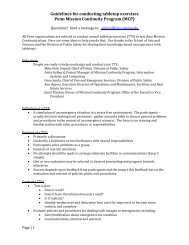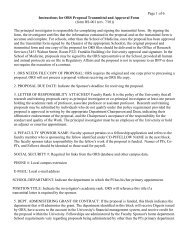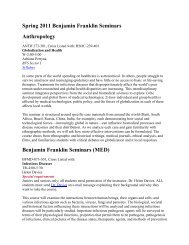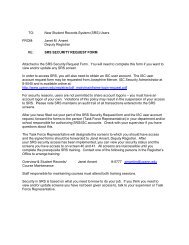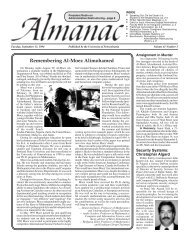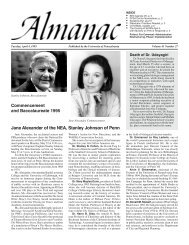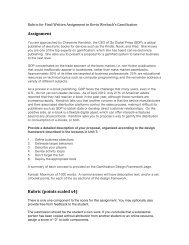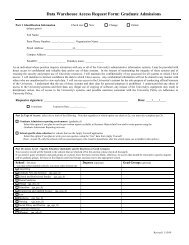Transitional Care for Older Adults: A Cost Effective Model
Transitional Care for Older Adults: A Cost Effective Model
Transitional Care for Older Adults: A Cost Effective Model
Create successful ePaper yourself
Turn your PDF publications into a flip-book with our unique Google optimized e-Paper software.
POLICY IMPLICATIONSThese studies strongly suggest the clinical and economic benefits of a comprehensive,multidisciplinary, individualized intervention directed by clinical nurse experts thatspans the entire hospitalization and bridges the transition from hospital to home.• Policymakers should consider the adoption of a transitional care benefit underMedicare, which would cover cost-effective coordinated care models such astransitional care delivered by appropriately trained nurses.• Medicare coverage is the first step in changing present systems of care, which ischaracterized by the organization of care into distinct and separate silos (i.e., hospitaland home care). Longitudinal integration of physician and nursing care is needed tosupport elderly patients through an acute episode of illness, and assure continuity ofcare <strong>for</strong> high-risk elders.• Further research is needed to define the relative effectiveness of alternative designs andcomponents of transitional care, and to define the optimal length and intensity ofinterventions.This Issue Brief is based on the following articles: M.D. Naylor, D.A. Brooten, R.L. Campbell, G. Maislin, K.M. McCauley, J.S. Schwartz.<strong>Transitional</strong> care of older adults hospitalized with heart failure: a randomized, controlled trial. Journal of the American Geriatrics Society,May 2004, vol. 52, pp. 675-684; M.D. Naylor. <strong>Transitional</strong> care of older adults. Annual Review of Nursing Research, 2003, vol. 20, pp.127-147; M.D. Naylor, D.A. Brooten, R. Campbell, et al. Comprehensive discharge planning and home follow-up of hospitalized elders.Journal of the American Medical Association, Feb. 17, 1999, vol. 281, pp. 613-620; and M. Naylor, D. Brooten, R. Jones, et al.Comprehensive discharge planning <strong>for</strong> the hospitalized elderly. Annals of Internal Medicine, June 1994, vol. 120, pp. 999-1006.Published by the Leonard Davis Institute of Health Economics, University of Pennsylvania, 3641 Locust Walk, Philadelphia, PA 19104-6218.Janet Weiner, MPH, Associate Director <strong>for</strong> Health Policy, EditorDavid A. Asch, MD, MBA, Executive DirectorVisit us on the web at www.upenn.edu/ldiIssue Briefs synthesize the results of research by LDI’s Senior Fellows, a consortium of Penn scholars studying medical, economic, and social andethical issues that influence how health care is organized, financed, managed, and delivered in the United States and internationally. The LDIis a cooperative venture among Penn schools including Dental Medicine, Medicine, Nursing and Wharton, and the Children’s Hospital ofPhiladelphia. For additional in<strong>for</strong>mation on this or other Issue Briefs, contact Janet Weiner (e-mail: weinerja@mail.med.upenn.edu; 215-573-9374).© 2004 Leonard Davis InstituteIssue BriefPublished by theLeonard Davis Instituteof Health EconomicsUniversity of PennsylvaniaNonprofit OrganizationU.S. PostageP A I DPermit No. 2563Philadelphia, PA 191043641 Locust WalkPhiladelphia, PA 19104-6218215.898.5611fax 215.898.0229ADDRESS CORRECTION REQUESTED





